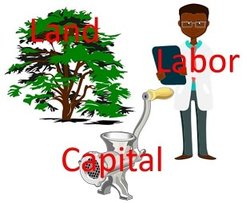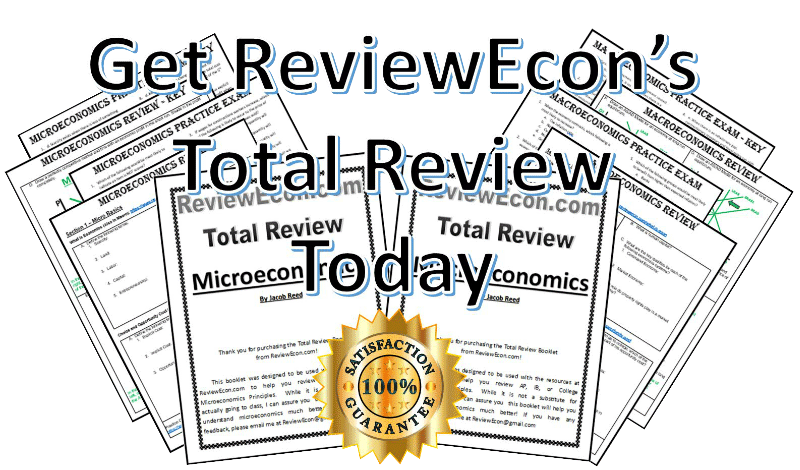What is economics all about?
3/21/24 Jacob Reed
So, you have decided to learn some economics. Before you dive in head first, it would be a good idea to get some sense of what you are in for. The AP Economics exam usually has just a couple of questions specifically focused on the content below, but it serves as a foundation for many other economic concepts. Below are 5 key concepts that answer the question, “what is economics all about?”

1.Scarcity
The problem facing all people is that resources are limited and insufficient to fulfill people’s wants. This economic problem is called scarcity. Scarcity exists any time there is less of something available than people desire. In modern societies, the more scarce an item is (the higher the desire for the item compared to the availability of that item), the higher the price that item tends to have.
Scarcity is often confused with shortage. Shortages occur when items sell out at the current price, leaving consumers who were willing to buy without. Essentially shortages mean the market price is too low (you will learn more about this in future units). Shortages occur with items that are scarce, but goods and services can be scarce without any need for there to be a shortage.
2.Resources
Resources (also called factors of production) are the things used to produce all goods and services. The 3 productive resources are land, labor, and capital. These 3 resources are needed to produce any good or service. Since all of these resources are scarce, the products made with them are also scarce.
Land (AKA natural resources) includes resources that come from nature. Oil, lumber, sunlight, water, corn, leather, etc. all come from nature and land.
Labor (AKA human resources) is the work (mental and physical) from people to produce a good or service. Swinging a hammer, serving a latte, or writing code are all labor. Human capital is the skills and knowledge of a worker. The more human capital a worker has, the more value their labor tends to have. Going to college or becoming an apprentice helps a worker gain more knowledge and skills, which builds that worker’s human capital. Greater human capital improves worker productivity as highly skilled workers can produce more goods and services (or more valuable goods and services) per hour worked than low skilled workers.
Capital (AKA physical capital or capital goods) are goods used to produce other goods and services. These are the machines, tools, and buildings used to produce. Capital can be as simple as a pair of scissors or a pencil or as complicated as an industrial robot, or it can be an entire factory or building where industrial robots are made.
Entrepreneurship is the 4th resource and extremely important resource. An entrepreneur is a person who takes the 3 productive resources (land, labor, and capital), takes a risk, produces a good or service with those resources, and offers that good or service for sale in the product market seeking a profit.
All 4 of these resources are scarce. As a result, the goods and services produced by these resources are also scarce.
Note: Some resources, like the sun (a natural resource), are not scarce because they are non-rival. That means it isn’t used up as it is used. When a farmer uses the sun in one field, there isn’t less sun in the next.
3.Choice
Since resources are scarce, people must make choices regarding how to use their resources. When you choose to use a resource to do one thing, you lose the opportunity to use the resource to do the other. The lost opportunity is called an opportunity cost. Every choice has an opportunity cost. At its heart, economics is about choices and opportunity costs.
4.Three essential economic questions
The problem of scarcity forces societies to answer 3 basic questions. Those questions are: what to produce? how to produce? and for whom to produce?
What to produce? asks what goods and services the society is going to make with their resources. Will the country focus on producing consumer goods or capital goods, guns or butter, radios or cell phones? The society cannot produce everything so it will have to make choices and those choices will have opportunity costs.
How to produce? is a question regarding methods of production. Will goods be hand crafted by individuals start to finish or will workers specialize in just part of the production? Will the society work to produce using sustainable resources or produce using the method with the lowest current cost?
For whom to produce? is a question about distribution. Once goods and services are produced who is going to get them? Will it be people most in need? People who worked the hardest? Or those with the most money?
5.Economic systems
Every economy must have a system for answer the three basic economic questions. There are 3 pure economic systems: Traditional, Command, and Market. Every economy in the world today is a mixture of these three economies.
Traditional economies answer the three basic questions using custom and culture. Traditional economies will produce the same products that were produced in the past and using methods passed down from previous generations. In a purely traditional economy, goods and services are produced for the family, tribe, or some other social unit. Close examples of traditional economies might be Amish communities found the United States or Inuit communities found in Canada.
Command economies (AKA Centrally Planned – like communism) have government officials (central planners) who make decisions about the economy and answer the three basic questions. In a pure command economy, the number of pairs of shoes, loaves of bread, and cell phones produced will be decided upon by a government bureaucrat. The problem with command economies is that supply and demand rarely meet. Shortages and surpluses are common and resources can be wasted as a result. Command economies can be good at achieving specific goals for society like increasing economic equality. One of the closest examples of a purely command economy today is North Korea.
Market economies (like capitalism) use the desires of individuals to answer the three basic questions. As a result, self-interest is a driving force. Individual entrepreneurs decide what goods and services to produce and how to produce them. For whom to produce is answered by individual consumers who get to decide for themselves which products to consume. Market economies tend to be quite efficient and get a lot out of their resources. The most important characteristic of market based economies like capitalism is private property rights. Many economists credit enforcement of property rights with creating efficient outcomes and expanding wealth within market based economies. The United States is a capitalist economy close to a pure market economy.
To sum up:
Economics is the study of how individuals and societies make choices, each with an opportunity cost, to deal with the problems created by scarce resources that are insufficient to fulfill competing wants.
Multiple Choice Connections:
2012 Released AP Microeconomics Exam Question: 47,
Up Next:
Content Review Page: Opportunity Cost
Other recommended resources: Crash Course Economics (introduction), University Now (economic systems)
